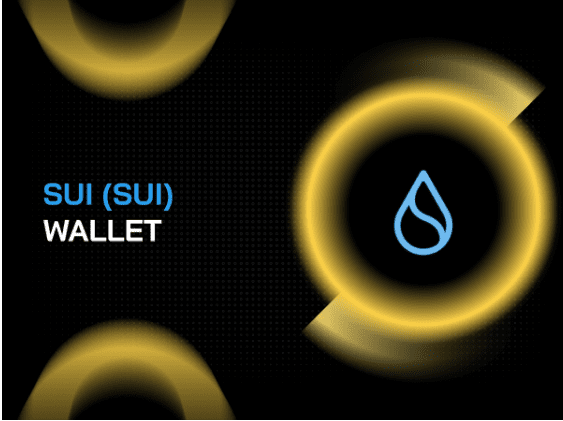A new member of the distributed ledger team has joined the blockchain community. The Sui blockchain has many unique characteristics that make it stand out and it seems to be rather promising. How far will it go, though?
Blockchain technology is still gaining popularity in the Web3 domain, and by 2026, it is predicted that the global blockchain business will be worth $67 billion. Sui is one of several recent examples of cutting-edge platforms that have been unveiled as a consequence.
But what makes this newcomer so unique, and what objectives does it seek to fulfill?
Continue reading to learn more about the Sui blockchain’s design, salient characteristics, tokenomics strategy, and future possibilities.
The Sui blockchain: what is it?
Sui wallet is a permission less, PoS-powered Layer 1 blockchain that was created to enable a wide range of future latency-sensitive decentralized applications while also attempting to provide quick settlement and fast throughput.
Mystery Labs, an R&D firm created by former top executives from Meta’s Novi Research and key architects of the Diem blockchain and Move programming language, is the company behind the Sui blockchain. No of their backgrounds, developers, and artists will find the company’s high-end solutions to be a smash. The company is poised to alter the Web3 scene.
Mystery Labs is well-positioned to continue growth after successfully raising $300 million in the Series B fundraising round.
The following is what Mysten’s co-founder and CEO, Evan Cheng, has to say about the business’s first Sui blockchain platform:
“The current suit.app infrastructure is dial-up age – it’s costly, sluggish, has limited capacity, is insecure, and is just difficult to develop for. With Sui, we’re attempting to create a blockchain that grows and expands with demand, cutting out intermediaries and allowing users from various apps to communicate and integrate with their favorite goods without any difficulty.
What kind of architecture is Sui?
Sui’s technical literature states that the blockchain is made up of three key parts:
Objects. Sui owns programmable items created and maintained by smart contracts that support Move, which is also referred to as objects. Sui’s objects are further divided between immutable packages and changeable data values.
Transactions. Any modifications and additions to the Sui ledger are described through transactions.
Validators. Independent validators manage the whole Sui network. On a different computer, each of them is running a unique instance of the Sui program.
The Sui Consensus Engine, which consists of a Narwhal and either Bullshark or Tusk, is another feature that deserves attention.
Data presented for consensus must be made available, according to Narwhal.
To settle on a certain arrangement of this data, Bullshark or Tusk are utilized.
What does the Sui Explorer provide and what is it?
The Sui Explorer, which was introduced in August 2022, is a unique tool for consumers and developers that are ready to begin developing on Sui. Its main objectives are as follows:
Keep track of and manage accurate and relevant on-chain data, activity, and performance indicators.
- Making all assets and contracts trackable and able to be verified
- to serve as a reliable tool for auditing and debugging
- Develop smart contracts without difficulty and add special Move features.
What language was used to create Sui?
The Move programming language, which is based on Rust, is used to create the Sui blockchain.
The move is a bytecode language that makes it possible to create smart contracts and customized transaction logic. It is seen as platform-agnostic, facilitating the creation of developer communities across several blockchain platforms as well as common libraries and tools.
The primary goals of Move are to improve safety and security and to make the transition from Web2 to Web3 easier. Additionally, it is thought to be effective in addressing problems with poison tokens, re-entrancy vulnerabilities, and falsified token approvals.
Additionally, Sui’s parallel agreement is supported by Move’s type system and data format, which further increases and buys SUI cryptocurrency scalability. It was said that as of March 19, 2022, a single-worker Sui validator operating on an 8-core M1 Macbook Pro could commit and execute 120,000 token transfer transactions per second (TPS).
What characteristics and advantages does the Sui blockchain offer?
The most intriguing technological characteristics of Sui, according to its creators, are simultaneous transaction processing, a streamlined development experience, a novel security strategy, and improved UX for Web3 projects.
Execution of parallel transactions
Sui can bypass consensus and parallelize the processing of several unrelated transactions by employing the Byzantine Consistent Broadcast, which minimizes latency and increases throughput.
Sui also verifies transactions individually as opposed to many other blockchains, which bundle them into conventional blocks. Each transaction is issued a certificate of finality when it has been successfully executed, ensuring that it cannot be undone.
Easier developer experience
The blockchain-focused Move programming language from Sui makes life easier for developers. Programmers should be able to create less boilerplate code and make fewer mistakes when using basic ideas as a result.
The sell SUI cryptocurrency gives Sui developers the ability to successfully construct composable objects or dynamic NFTs that may be improved and/or aggregated according to the needs of the Sui wallet IOS app. This results in better feedback and more sophisticated in-game economies.
Innovative security strategy
Sui is less concerned with strict network synchrony assumptions than many other blockchains. As a result, the platform can continue to function securely even in challenging network situations like network splits or DoS attacks.





























